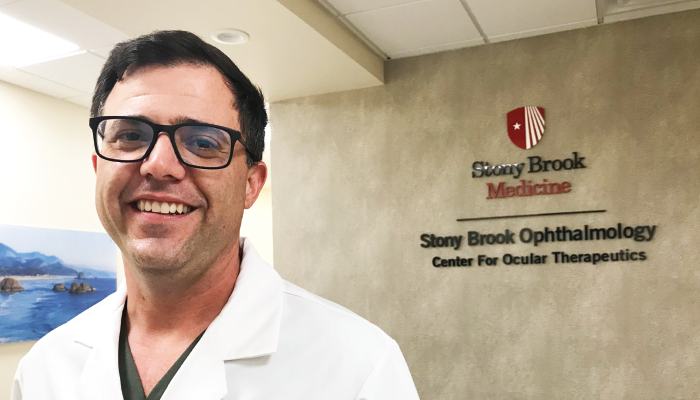
Daniel Cyr
A recent paper published in the British Journal of Ophthalmology has revealed that one in three children globally are already nearsighted, with this figure set to rise to almost 40 percent of the entire population by 2050.
To find out more about what this might mean for ophthalmology, and how we might prepare for the coming “myopia pandemic,” we spoke with Daniel Cyr, a pediatric ophthalmologist at Stony Brook Medicine, New York.
What for you were the most surprising findings in the British Journal of Ophthalmology study?
I don't know if it was as surprising – it was just confirming what we were already thinking. There have been earlier studies about the prevalence of myopia, and it has previously been suggested that in the future there will be a higher prevalence. But this was definitely the most comprehensive study undertaken so far, and really confirms our suspicions that, sometime by the middle of the century, around half of the global population could be myopic.
What are the main factors involved in driving this myopia trend?
We know that people born from myopic parents have a tendency to be more myopic. So, we have already seen that rise in myopia, that has been associated with more of the population already being myopic. But within the past 20 years we've seen a large jump in myopia levels, and that’s mainly associated with the increased nearwork that people are doing at a younger age. We believe that a major factor in this is the accommodation that occurs in the eye while looking at near objects, which – when done over long periods – can change the shape of the eye over time.
As a pediatric ophthalmologist, what main eye issues do you commonly encounter in children?
I see a lot of untreated myopia cases in my practice. The other two big ones I get are amblyopia and strabismus. In our practice on Long Island, we take advantage of photo screeners. These photoscreening devices are used by local pediatricians to screen patients, who are then referred to us if they fail that initial screening. These tools are enabling us to catch signs from kids at a much younger age, who are perhaps pre-verbal and amblyopic but have no other signs. Amblyopia can be a very silent disease, but of course it can have long-term effects on these individuals.
Is there anything else you would like to add?
As eye care professionals, we know that a myopia pandemic is coming. I think getting the word out to our patients and our community is crucial. Lots of patients that have come into my office now have concerns about myopia and myopia progression, because there has been a good amount of it in the news. Getting that information out to the public is important, and letting them know that there are ways to slow it down. We can't stop myopia entirely, but there are options available for monitoring and then reducing the velocity of myopia progression. As eye care professionals, this is the information that we need to get out there.
This article first appeared in The New Optometrist.
